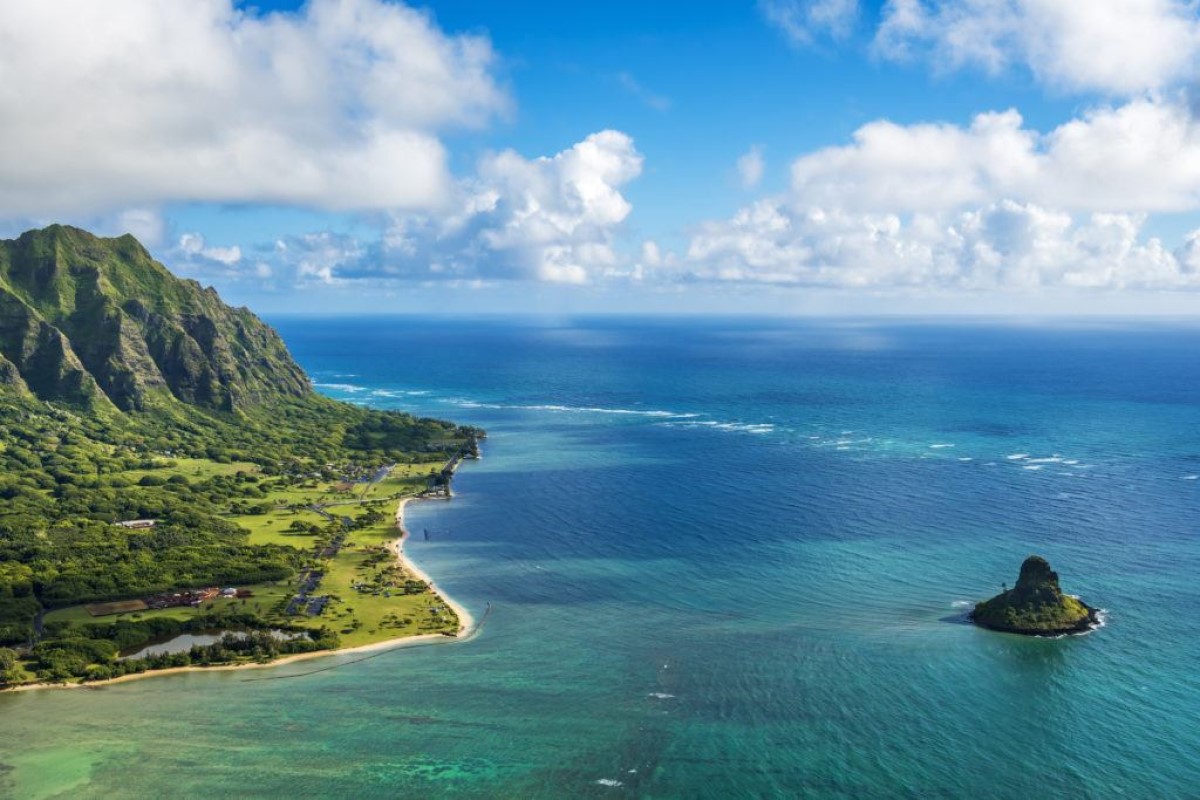Texas A&M Team Finds New Ways For Coral Reef Ecosystems To Grow
Researchers examined particulate organic matter and how it affects declining coral reefs in Hawaii.
Aug 30, 2019

For the first time, a team of scientists that includes three Texas A&M University researchers have found that microscopic oceanic organisms are important for coral reef growth and sustaining these vital ecosystems.
The team, which includes Texas A&M’s Dr. Kathryn Shamberger, assistant professor, and former Ph.D. student Dr. Andrea Kealoha, both from the Department of Oceanography, and Dr. Brendan Roark, associate professor in the Department of Geography, have had their work published in Geophysical Research Letters, part of the American Geophysical Union. Other collaborators are from the University of California Irvine, Woods Hole Oceanographic Institution, National Oceanic and Atmospheric Administration and the Hawaii Institute of Marine Biology.
The researchers examined Hawaii’s Kāneʻohe Bay barrier reef and microscopic particles called particulate organic matter, or POM, which includes phytoplankton. Their results suggest that POM from the open ocean helps provide energy for a coral reef ecosystem to grow.
“An important distinction that we make in this paper is that we are looking at ’oceanic POM’ that comes from offshore and is brought onto the reef by currents and waves,” Shamberger said.
“Coral reef organisms make a lot of POM that the reef feeds on, and it has been known for a long time that feeding on ‘reef POM’ is important for keeping the reef ecosystem healthy,” she said. “More recent studies have shown that coral reefs also feed on ‘oceanic POM’ and what is new here is that our results show this external food source might be helping the reef grow. We used carbon isotopes to distinguish between oceanic POM and reef POM.”
Calcification is the process by which marine organisms make calcium carbonate skeletons and shells. Calcification (mainly by corals and coralline algae) is what builds the three-dimensional structures of coral reefs that provide the habitat for the entire ecosystem.
“Coral reefs are constantly being eroded and broken down by waves, currents and reef organisms,” Shamberger said. “The reef has to calcify fast enough to maintain the reef structure under all of these destructive processes, so faster calcification can be beneficial for the ecosystem.”
In many areas of the ocean, the calcification of corals and other organisms creates reefs that protect coastal communities, produce attractive white sand beaches, and create habitats for thousands of species that live on coral reefs.
Coral reefs often serve as an indicator of healthy ocean conditions. Studies show that even though they cover less than 1 percent of the ocean, coral reefs are one of the most diverse ecosystems on the planet and are home to at least one-fourth of all marine life.
The leading researcher on the paper, Andrea Kealoha, currently of the University of Hawaii-Maui, said that the more oceanic POM that is supplied to the reef, the more food the reef has to consume, and the more it calcifies.
“A couple studies have hypothesized that this is the case, and when we feed corals POM in the lab, they calcify more. However, our work is the first study to show this is happening in the field,” Keahola said.
Shamberger said that previous studies have shown that climate change is an important factor in the decline of coral reefs.
The studies show that climate change is already harming coral reefs, especially through ocean warming, but also from other climate change effects including ocean acidification and storm intensification, she said.
“Another effect on the ocean is that climate change is making the surface waters in parts of the open ocean less productive. Fewer nutrients are making it to the surface of the open ocean, and this means fewer phytoplankton are able to grow. Since phytoplankton are the base of the food web in the ocean, fewer of them means fewer of everything else, from other plankton to fish, etc., Shamberger said.
Shamberger said the study shows that coral reefs may also need phytoplankton from the open ocean (oceanic POM) to calcify and grow fast enough to maintain the reef structure and thus, the entire ecosystem. She said it proves that “climate change causing a decrease in open ocean productivity could also result in slowing coral reef growth, adding to the many stressors coral reefs are under. Alternatively, coral reefs that have a plentiful supply of oceanic POM may be able to maintain their growth better under climate change stressors.”
Shamberger also noted that the big picture of the study is twofold: First, to understand the sensitivity of coral reefs to climate change, researchers have to study the nearby open ocean in addition to coral reef waters; and second, the results may help coral reef researchers identify reefs that are particularly sensitive or resilient to climate change, which could help prioritize the resilient reefs for other types of conservation, for example, reducing fishing pressure and land-based pollution.
“Less oceanic POM means less food supplied to the reef, and coral reef growth may decline. However, our results also suggest that oceanic POM may help reefs continue to calcify and grow, even under stressors like ocean acidification,” Kealoha said.
By Keith Randall, Texas A&M University Division of Marketing & Communications

